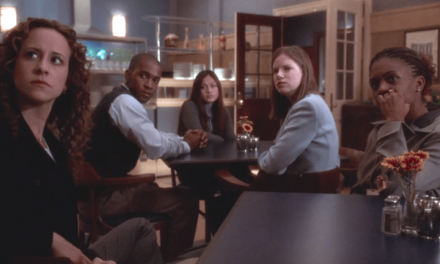CFP: Media Values: The Velvet Light Trap, Issue 95 (to be published Spring 2025)
Media industries utilize a number of different strategies to assign value to their commodities. Box office receipts have long been a benchmark of success for theatrical film releases, despite proliferating ancillary revenue streams. Audience ratings determined advertising dollars as the dominant form of evaluation in linear commercial television. High engagement metrics on social media often translates to increased bargaining power of influencers, actors, and writers alike. Yet, these processes of valuation are in a constant state of flux dependent upon variables such as technological innovation, economic conditions, and cultural climates.
The economic and cultural value of media is, therefore, far more complex than formulas of dollar signs and industry metrics. Where and how institutions, organizations, and intermediaries assign value reflects ideological biases often along the faultlines of race, gender, and class. Practices like rewatching, fansubbing, fan fiction writing, and collecting all express personal value as well as create economic value for media firms. The politics of certain media objects and forms demonstrate the contested terrain of social and ethical values amidst anxieties of industrial transition and technological innovation.
Media industries themselves are objects of evaluation—which has become clear with recent shifts in the criteria upon which financial organizations value media firms and platforms. Industry-wide speculation regarding the return on investment for streaming has proven to be unsuccessful for studio and network executives and harmful for creatives. Tech and internet companies constantly modulate the terms and interfaces of social media platforms that provide users with valuable promotion and networking. Concepts like brand recognition and brand identity have symbolic weight in decisions of corporate restructuring, yet do not always translate to profit if undercut by poor distribution or content management strategies. Of course, these trends are merely the latest manifestations of the ongoing and unstable processes by which value changes over time. Institutions and intermediaries like art house cinemas, film and television festivals, archives, professional organizations, and the academy all—to varying degrees—influence how valuable a media commodity or company is at different moments in its (potentially endless) lifetime.
This issue of The Velvet Light Trap will explore the varied relations between media and value. We welcome pieces about all media forms and industries, as well as submissions that look beyond these toward audiences, stars, technologies, etc. We seek a range of methodological and theoretical approaches encompassing—but not limited to—historiographic, textual, political economic, and critical-cultural treatments of evolving valuation practices in contemporary and historical contexts across production, distribution, exhibition, reception, and regulatory processes.
We look forward to submissions which address any of the following topics including but not limited to:
-
Studies of formal and informal circulation patterns and their impacts on value creation and/or destruction
-
Ownership in the media industries and ownership of media commodities
-
The evolving marketplace for content libraries
-
The continuing value of rights licensing in live broadcasting and streaming media
-
Archiving and preservation practices and priorities
-
The collection of physical media formats and material value in the digital era
-
The relationship between financialization and the media industries
-
Emerging cultural intermediaries like content aggregators
-
The use of (or troubling the use of) identity politics in the valuation of texts
-
The role of social media and viral marketing in the creation of anticipation or controversy
-
Explorations of geocultural capital and the mechanisms by which different nations, regions, and cities accumulate and exchange it
-
The role of creative labor in the production of value
-
The representation of national, religious, and/or political values in media texts and industries
-
The role of ancillary industries and markets in the construction of value
-
Academic patterns of value in relationship to certain media forms and industries
Open Call
In addition to accepting submissions that relate to the above theme, The Velvet Light Trap will accept general submissions broadly related to the journal’s focus on critical, theoretical, and historical approaches to film and media studies. We hope that scholars inspired by the work published in our themed issues, past and present, will especially consider submitting their work.
Submission Guidelines
Submissions should be between 6,000 and 7,500 words, formatted in Chicago Style (notes-bibliography). Please submit an electronic copy of the paper, along with a separate one-page abstract, both saved as Microsoft Word files. Remove any identifying information so that the submission is suitable for anonymous review. Quotations not in English should be accompanied by translations. Send electronic manuscripts and/or any questions to vltcfp@gmail.com by January 28th, 2024.
About the Journal
The Velvet Light Trap is a scholarly, peer-reviewed journal of film, television, and new media. The journal draws on a variety of theoretical and historiographical approaches from the humanities and social sciences and welcomes any effort that will help foster the ongoing processes of evaluation and negotiation in media history and criticism. Graduate students at the University of Wisconsin-Madison and the University of Texas at Austin coordinate issues in alternation, and each issue is devoted to a particular theme. VLT’s Editorial Advisory Board includes such notable scholars as Manuel Avilés-Santiago, Andre Brock, Dolores Inés Casillas, Norma Coates, Brian Fauteux, Aniko Imre, Lori Morimoto, Ruben Ramírez-Sànchez, Debra Ramsey, and Alyx Vesey. TVLT‘s graduate student editors are assisted by their local faculty advisors: Mary Beltrán, Ben Brewster, Jonathan Gray, Michele Hilmes (emeritus), Lea Jacobs, Derek Johnson, Shanti Kumar, Charles Ramírez Berg, Thomas Schatz (emeritus), and Janet Staiger (emeritus).





